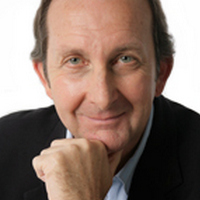

The Iron Lady’s advice looks timely as the Treasurer has changed the make-up of the Reserve Bank board that now exclusively sets rates. This board will be historically unique because it will be dominated by women for the first time!
The women versus men on this new board, headed up by Governor Michele Bullock, will be five versus four. Given this is the board that needs to understand the big picture of the economy and how it’s affecting the smaller pictures of that same economy, which include consumers, small and big businesses and other important players like foreign investors, it might be time for some forceful, well-qualified women to help make better decisions on rates.
For the record, Dr Phil Lowe’s “no rate rise until 2024” message (that he thinks was misinterpreted by the media and borrowers, and that arguably led to overborrowing and a big spike in house prices) wasn’t the only interest rate mistake the RBA has made.
There have been lots of them. Many of these mistakes have happened because it’s a hard job to understand how rate rises (or cuts) affect the economy, because there are lags between a rate change and when it really hits the economy and someone’s hip pocket.
Some mistakes happened because the board was too weak to fight the various RBA Governors and their economists, because it was assumed, correctly, that the central bank bosses had a team of research experts giving them advice.
However, economics is not only a dismal science (as Scottish historian and philosopher, Thomas Carlyle, called it), it’s also an imprecise social science because societies are ever-changing, which leads to the unpredictable.
For example, who would’ve thought bosses would be fighting to get workers to return to the office? And who knows what this is doing to productivity, business costs, inflation, demand for houses and home prices?
Right now, the RBA, the Treasurer and business economists and financial controllers of big companies are trying to find the answers to these questions.
And as the AFR’s Economics Editor, John Kehoe, concluded: “The treasurer has selected two good candidates and should be congratulated for shoring up the RBA at a pivotal time in the inflation fight”.
The two newbies are ANU economics professor, Renee Fry-McKibbin, who is a highly respected expert on the macro economy and the mining industry. She’s married to Warwick McKibbin, who’s arguably Australia’s most internationally acclaimed economist and was on the RBA board for 10 years. Importantly, he was outspoken about some decisions that his board made and many times he was right!
The other appointee is former Bendigo Bank CEO Marnie Baker, who had 35 years in banking and was the bank’s treasurer before becoming its boss. “She will bring a deep understanding of Australia’s financial system and an important regional perspective to considerations on monetary policy,” Chalmers said, and that could hardly be argued with.
Kehoe reminded us of who’s on the board going forward, and here it is: “The new nine-member monetary policy board will consist of Bullock, deputy governor Andrew Hauser, Treasury’s Kennedy and six part-time external members – economist Ian Harper, financial services veteran Carolyn Hewson, former Fair Work Commission president Iain Ross, former Coca-Cola Amatil chief executive Alison Watkins, Baker and Fry-McKibbin.”
This is a strong team of high achievers on one of the most important boards that will have a big impact on many people’s lives and businesses, so you have to hope that this new group of interest rate setters can get it more right than their predecessors.
This is the best-qualified RBA board I’ve seen since I’ve been covering the economy in the media or lecturing at the UNSW. I agree with Kehoe when he argued that “…the appointments of Baker and Fry-McKibbin to five-year terms blunt claims by shadow treasurer Angus Taylor that Chalmers is “sacking and stacking” the board.
This doesn’t look like a board that will capitulate to a Treasurer to go soft on rates, so his party can remain in government. In fact, his selections of Fry-McKibbin and Baker indicate he’s actually trying to create a competent central bank rate-setting board.
That said, Kehoe does raise an interesting conspiracy argument that the selection of Fry-McKibbin might help shut Warwick up, who has been long publicly arguing that the cash rate should’ve gone to 5%, not 4.35%.
Effectively he’s been saying the old RBA board, and its Governor got it wrong on rates. Given that the central banks of most countries are now cutting rates, they also took their official rates to 5% or higher. So, Warwick is looking like he was on the money with his criticism.
I wish the board luck and hope that its new members can show us how the job is done because it’s an important one.